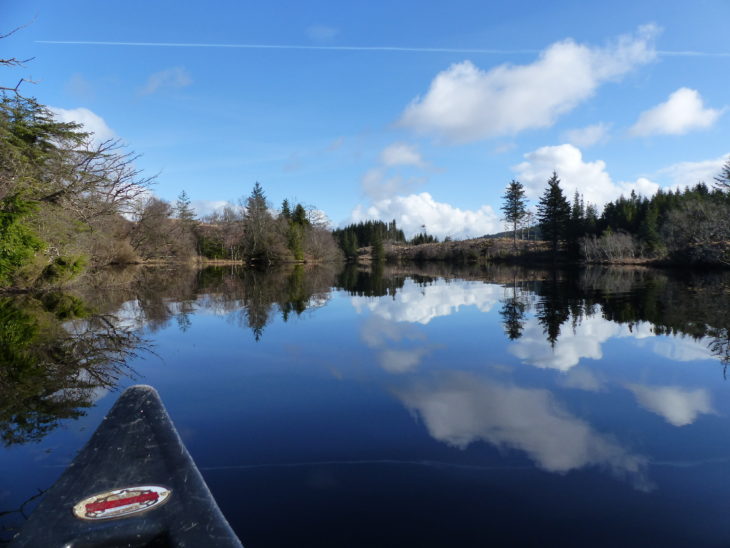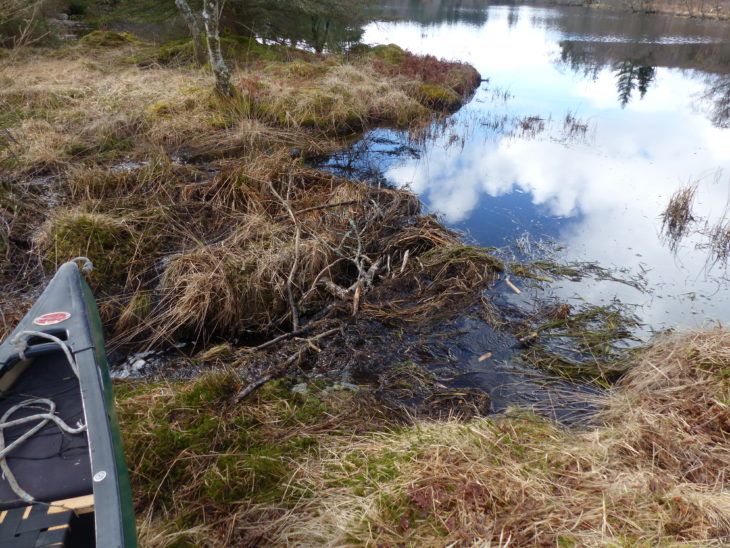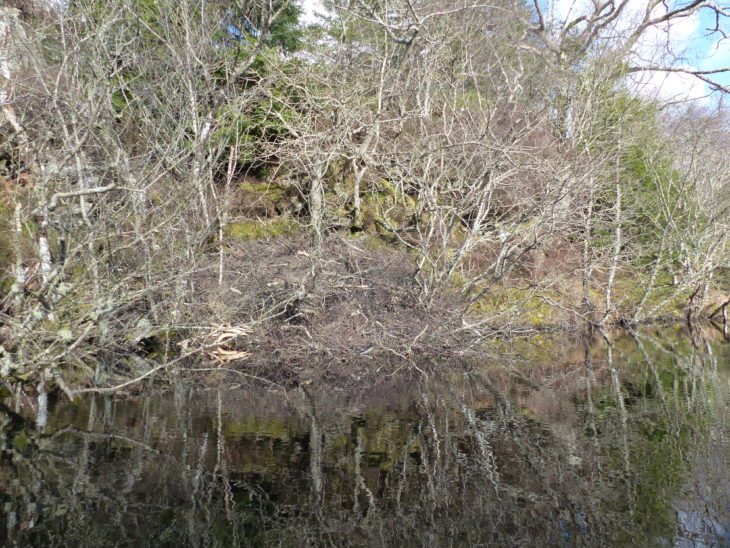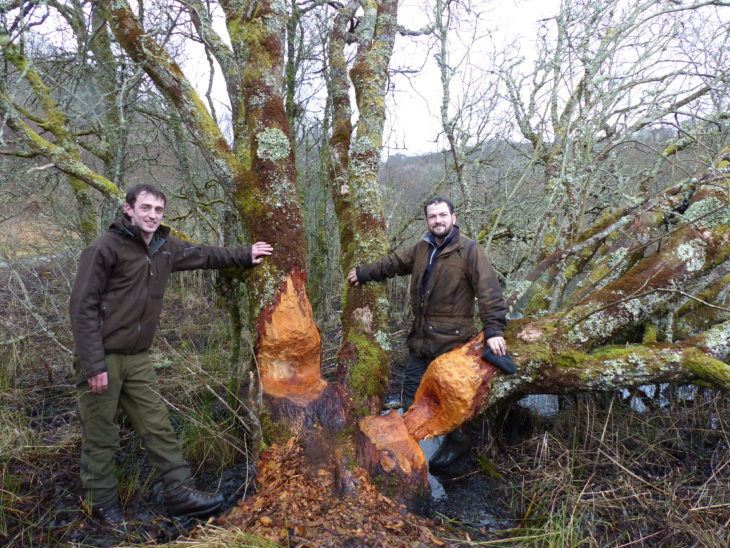Searching for beavers in Knapdale Forest
The canoe was launched at 9:30 am into the still waters of a lochan high in the hills above Knapdale.

To get here we had driven along rough access roads through a mosaic of plantation and native riparian woodland before carrying the canoe on our shoulders for the final 100 metres. I had arrived in mid-Argyll the day before having only read about the changes these remarkable rodents can bring to our landscape, so I was looking forward to witnessing their presence for myself.
We slipped quietly into the water and it took a minute or so for me to realise that the access point into the loch was in fact a beaver-built dam. RZSS Conservation Manager Ben Harrower, who was leading a two weeks of intensive monitoring in the area as part of the reinforcement of the beavers released as part of the Scottish Beaver Trial population, pointed out to me how the dam was clearly being well maintained.

The dam was more than the simple pile of brash I’d imagined. It was clearly constructed and considered, and it was surprisingly neatly built. This is a good sign of their continued presence, as a lack of obvious maintenance suggests the residents have moved on.
Ben then showed me that the level of the loch had been raised by around a foot, allowing the beavers to swim into an area of wet alder and willow woodland on the far bank of the loch. We paddled silently around the loch hoping, in vain, that we would catch a rare glimpse of a beaver in the daytime.
As we circled the edge of the loch we gazed intensely at the shoreline looking for any evidence of beaver presence. Each sign was carefully noted with its GPS location. There was indeed evidence of feeding in the wet woodland on the far side. Floating in the margins of the loch were small branches and other woody debris. The beavers had excavated two canals which sinuously made their way into the woodland around 20 metres from the pre-beaver shoreline.
These canals are used to float larger branches and tree trunks from the woodland back to the lodge. When I eventually ‘found’ the lodge (I’ll admit Ben knew precisely where it was before we arrived, but had the grace to allow each piece of beaver evidence on the loch to reveal itself to me) I was taken aback by its size!
I had imagined it would perhaps be as big as a bath tub, but it was more like a small car. It was stood on the shoreline within a clump of small birch trees overhanging the loch. A covering of slender birch twigs helped to add to the camouflage, and so despite its size anyone could easily have paddled past unaware of its presence.

We noted the lodge on our monitoring sheets, recorded the location, and paddled on. We were almost back at our starting point when we noticed an area of mid-sized birch and, uncommonly, a small oak that had been felled recently by beavers. The conical stump produced by their chew marks are instantly recognisable. Most trees felled by beavers quickly regrow and in a few years’ time this area will be a mass of small willows, birch and alder, at least until the next ‘harvest’.

As we pulled the canoe out of the loch I reflected that while I had heard a lot about the powerful, ‘engineering’ effect that beavers can have, it is only when you see it for yourself that it sinks in how much they can change the landscape as they peacefully go about their lives. As some of the wildlife reserves I manage may host beavers in future, it was a useful experience to see these effects first-hand.
Rory Sandison is the Scottish Wildlife Trust’s Reserves Manager for East Central Scotland
Help protect Scotland’s wildlife
Our work to save Scotland’s wildlife is made possible thanks to the generosity of our members and supporters.
Join today from just £3 a month to help protect the species you love.
Preface
The canoe was launched at 9:30 am into the still waters of a lochan high in the hills above Knapdale. To get here we had driven along rough access roads …
